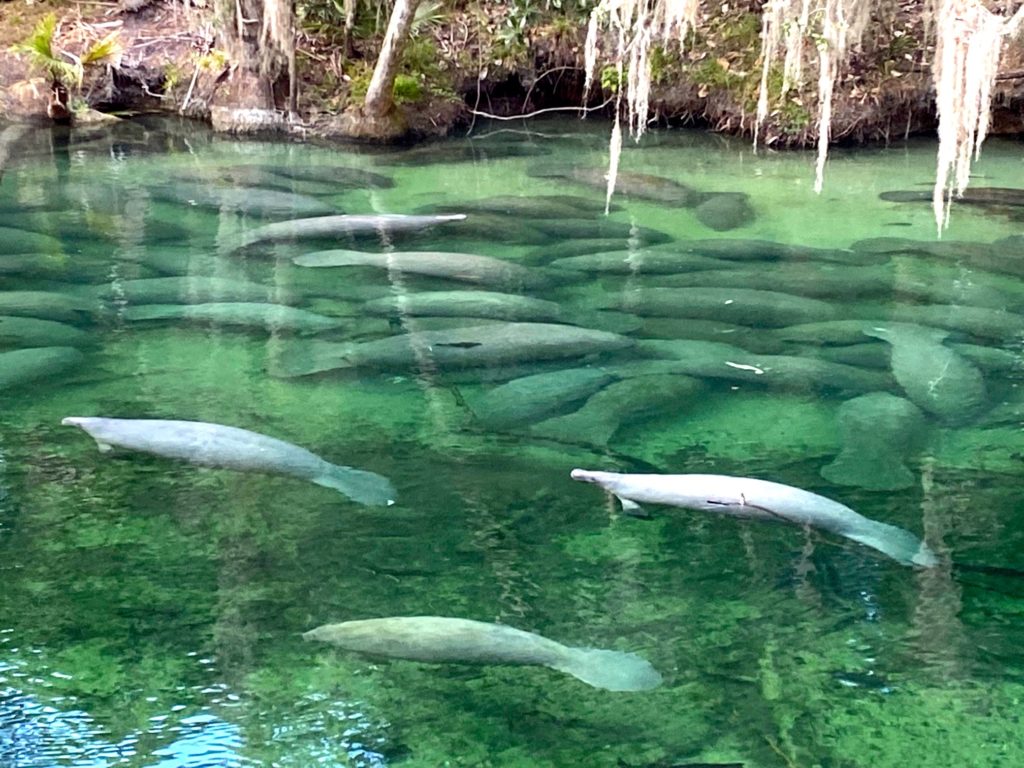Manatee Facts – Knowledge Challenge 6
Greetings!
Here is the sixth installment of awesome manatee facts for you. It’s worth repeating that we manatees are very large marine mammals with two flippers and a body tapering down to a paddle-shaped tail.
I’ll continue the manatee trivia in the form of the Q&A session, which seems to work great! Here it is…
- True or false: Manatees are found in coastal waters and along rivers. They are also the ocean’s largest herbivore.
True! Manatees live in coastal waters, rivers, and estuaries. And they are the ocean’s largest herbivore! An adult manatee can grow up to 13 feet long and weigh as much as 3,500 pounds. The manatee will eat 10 to 15 percent of its body weight in vegetation each day!
- History documented that Christopher Columbus’ ship log, which was dated January 9, 1493 read he “distinctly saw three mermaids, which rose well out of the sea; but they are not so beautiful as they are said to be, for their faces had some masculine traits.”
True! In fact, Christopher Columbus, along with many other sailors spotted mermaids in the water. And the reason these mermaids weren’t as beautiful as Columbus imagined is because they were actually manatees!
- While most animals have a heart that has a point, elephants and manatees have hearts that are rounded on the bottom.
True!
- With a single breath, manatees can replace 90 percent of the air in their lungs; humans, by comparison, replace just 10 percent.
True! The manatee’s lungs also assist in the marine mammal rising up and falling in the water.
- Manatees do not have any whiskers or hairs on their body.
False! Manatees actually have around 2000 thick, whisker-like hairs called vibrissae on their faces and around 3000 on their bodies. These vibrissae help the manatee sense and explore the underwater world around it.
- Manatees have perfect vision and can see the same colors we see.
False! Manatees are nearsighted and can see in blue, green, and gray—but not red!
Algae regularly grows on manatees because they enjoy moving slowly in their environment.
True! Manatees are slow moving and spend a lot of time at the water’s surface. Algae grow in wet areas with lots of sunlight. As a result, a manatee’s skin is a great place for algae to live. In fact, manatees do not seem to mind and the algae may help block out harmful rays from the sun.
Stay tuned for more manatee knowledge challenges in my future blogs!
If you are in Florida and you see a sick or injured manatee, please call the Florida Fish and Wildlife Conservation Commission at: 1-888-404-FWCC. They are the folks who are responsible for rescuing us in Florida.
Here’s the Save the Manatee Club link to learn more about us manatees …
Here’s a cool link for you to learn more about how we’re rescued and brought into rehabilitation …
~ Kobee Manatee
Related Posts
Manatee Facts – Knowledge Challenge 1 (October 3, 2019)
Manatee Facts – Knowledge Challenge 2 (October 16, 2019)
Manatee Facts – Knowledge Challenge 3 (October 28, 2019)
